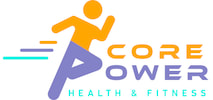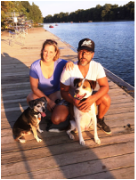STRETCH & REST CARE for the wellness warrior |
|
Besides being hard to pronounce, do you really know what a Kegel is? It’s a strengthening exercise for your pelvic floor (PF) muscles which run from the basin between your pubic bone and tailbone. If you think of the pelvis like a bowl, the muscles would cover the inside of the bowl. During a Kegel, you contract and relax those muscles. Both women and men can do them. A lot of women believe it’s normal to leak as you get older when laughing, jumping, coughing, or running. That’s actually a sign of a weak pelvic floor. And doing a 1000 crunches isn’t going to strengthen them! Most likely your physician has told you to remember to do your Kegel’s at your annual visit. It’s common to have NO clue what you're supposed to feel. Over the years, I've found that most of my clients are doing the Kegel incorrectly and aren’t maximizing the benefits of the exercise. What does the Pelvic Floor do? These important muscles form the base of your "core” and help with sphincter control, supporting the pelvic organs and are involved in sexual sensation. What’s the big deal? When they’re weak, you can have incontinence (leaking of urine or bowel), organ prolapse (bladder, uterus or rectum drops lower) and diminished sexual response (less sensation during sex or weaker orgasms). They can not only be weak but tight or painful like any other muscle. Fortunately, there are exercises and treatments available for all of these issues. Again, the PF muscles form the base of a strong core. Your core is your center from lower ribs to below your hips. All movement begins here in the stabilizer muscles- Pelvic Floor, Transverse Abdominus, hip rotators, low back (Multifidus). The Transverse Abdominus (TA) muscles, your deepest abdominals that are so hard to workout, run across your lower abdomen from hip to hip and coordinates closely with your PF. When strengthening your core, you want to focus on PF first by doing the Kegel exercise. Still not convinced it’s worth the effort? Well how about if you knew it would help you have better sex (i.e. stronger orgasms) or to help flatten your belly? Besides those benefits, a strong core has been shown to improve posture and decrease risk for injury. Before you jump into your next core workout, take a moment to learn how to do a proper Kegel to fully turn on your core. How do you find your Pelvic Floor Muscles? This exercise will help you feel the contraction of the PF muscles, so you know when they are working:
How do you strengthen your Pelvic Floor? Most likely you were not breathing while you did the movement above. It would be embarrassing to pass out from a Kegel. Before you jump into doing a bunch of reps, you have to learn how to breathe while you do the contraction of the PF. Breathe & Hold Exercise:
Keep in mind: if you’ve had back pain or surgery, scar tissue in your abdomen or pelvis, pelvic pain, and even tight hips or low back muscles- it’s going to be harder for your to reconnect with your PF muscles (and TA) BUT it is possible. What’s Next? Get your baseline: Check in as you are doing this exercise and see how long you can hold the contraction. Also, how many can you do before it’s not as strong of a contraction? This is your baseline and you can build from there. You don’t need to do a ton of reps to get stronger but work on increasing how many reps you can do and hold for longer in one sitting. Example: go from 5 reps for 3 seconds to 10 reps for 10 seconds over time. Check out Part 2 of the Pelvic Floor Series: How To Avoid The Most Common Kegel Mistakes. Have fun practicing! Mollie P.S. Are you making any of the 4 most common Kegel Mistakes? Find out here. * The “Connect the Dots”(pubic bone dot to the tailbone dot) cue was coined by our friend, Suzi Alderete, and described in her book: The Pelvic Handbook.
2 Comments
Leave a Reply. |
Mollie Miller, PT
|
TERMS OF USE PRIVACY POLICY
Core Power Health & Fitness, Inc. does not provide medical advice. Consult a licensed physician prior to beginning any exercise or nutrition program.
Copyright © 2015 Core Power Health & Fitness Inc.
Core Power Health & Fitness, Inc. does not provide medical advice. Consult a licensed physician prior to beginning any exercise or nutrition program.
Copyright © 2015 Core Power Health & Fitness Inc.


 RSS Feed
RSS Feed